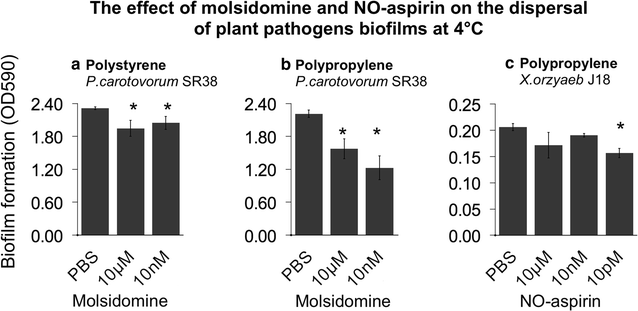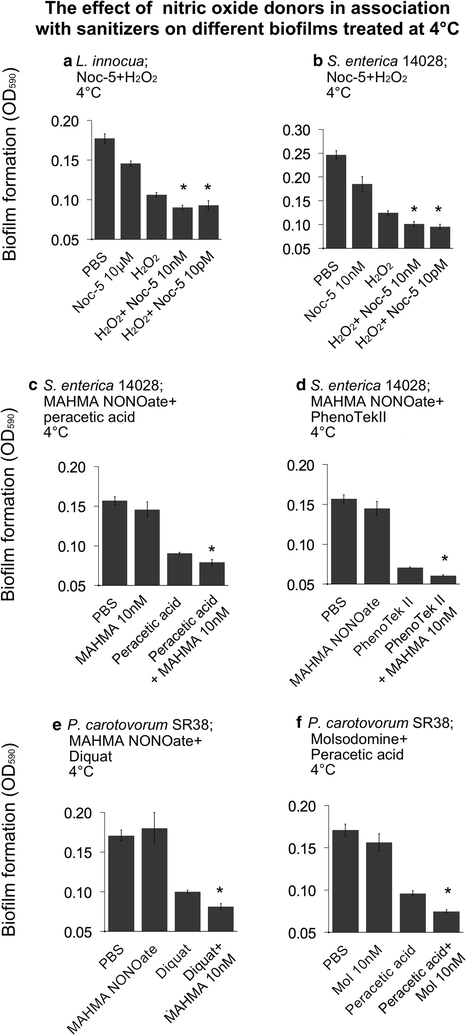Dispersal of human and plant pathogens biofilms via nitric oxide donors at 4 °C
- PMID: 27457245
- PMCID: PMC4960098
- DOI: 10.1186/s13568-016-0220-1
Dispersal of human and plant pathogens biofilms via nitric oxide donors at 4 °C
Abstract
Recent studies suggest that nitric oxide donors capable of manipulating nitric oxide-mediated signaling in bacteria could induce dispersal of biofilms. Encased in extracellular polymeric substances, human and plant pathogens within biofilms are significantly more resistant to sanitizers. This is particularly a problem in refrigerated environments where food is processed. In an exercise aimed to study the potential of nitric oxide donors as biofilm dispersal in refrigerated conditions, we compared the ability of different nitric oxide donors (SNAP, NO-aspirin and Noc-5) to dislodge biofilms formed by foodborne, human and plant pathogens treated at 4 °C. The donors SNAP and Noc-5 were efficient in dispersing biofilms formed by Salmonella enterica, pathogenic Escherichia coli and Listeria innocua. The biomasses were decreased up to 30 % when compared with the untreated controls. When the plant pathogens Pectobacterium sp. and Xanthomonas sp. were tested the dispersion was mainly limited to Pectobacterium carotovorum biofilms, decreasing up to 15 % after exposure to molsidomine. Finally, the association of selected nitric oxide donors with sanitizers (DiQuat, H2O2, peracetic acid and PhenoTek II) was effective in dispersing biofilms. The best dispersal was achieved by pre-treating P. carotovorum with molsidomine and then peracetic acid. The synergistic effect was estimated up to ~35 % in dispersal when compared with peracetic acid alone. The association of nitric oxide donors with sanitizers could provide a foundation for an improved sanitization procedure for cleaning refrigerate environments.
Keywords: Biofilm dispersal; Biofilms; MAHMA NONOate; Nitric oxide donors; Salmonella enterica; Sanitization.
Figures




References
-
- Barraud N, Schleheck D, Klebensberger J, Webb JS, Hassett DJ, Rice SA, Kjelleberg S. Nitric oxide signaling in Pseudomonas aeruginosa biofilms mediates phosphodiesterase activity, decreased cyclic di-GMP levels, and enhanced dispersal. J Bacteriol. 2009;191:7333–7342. doi: 10.1128/JB.00975-09. - DOI - PMC - PubMed
LinkOut - more resources
Full Text Sources
Other Literature Sources

